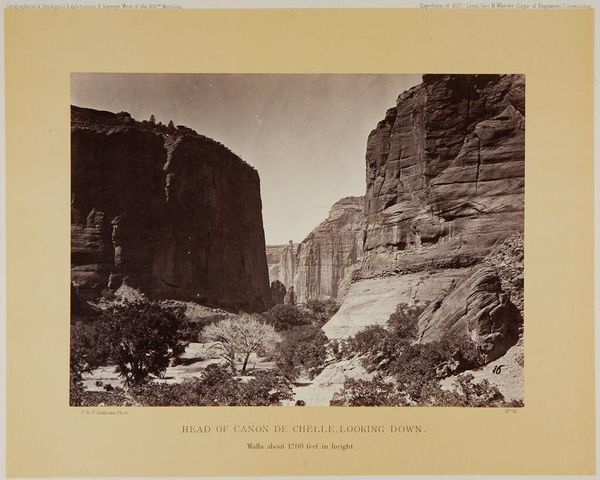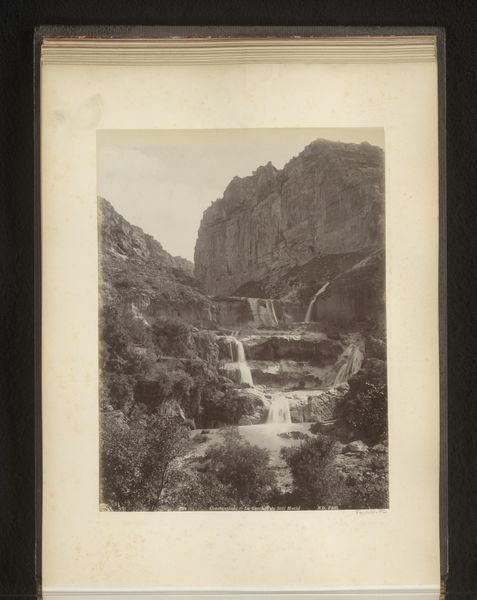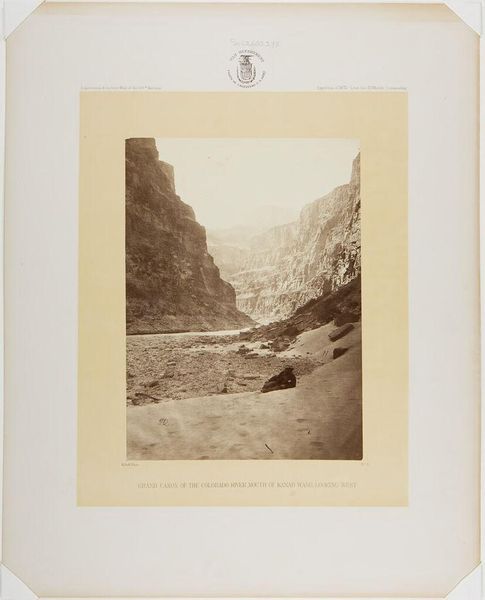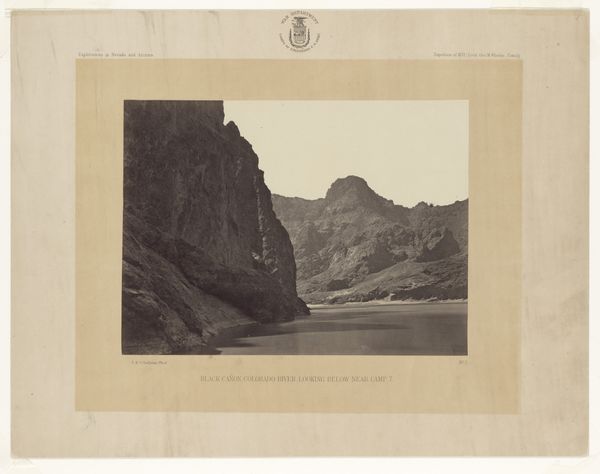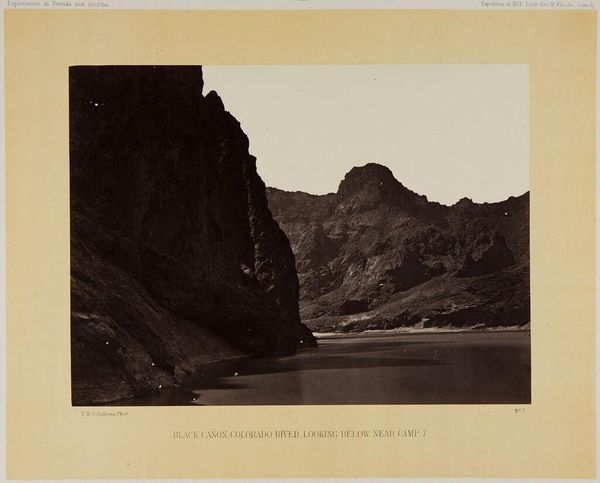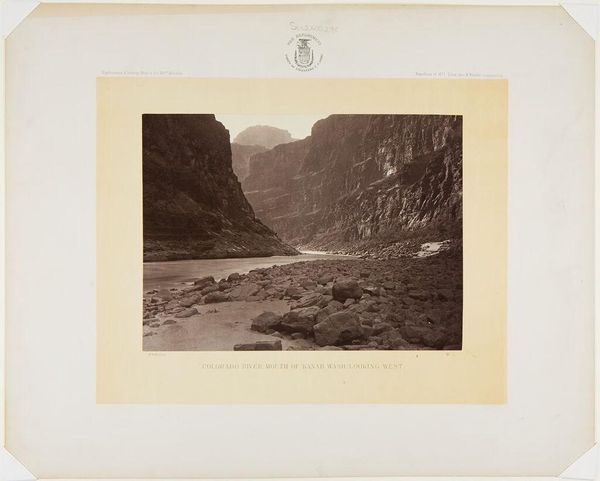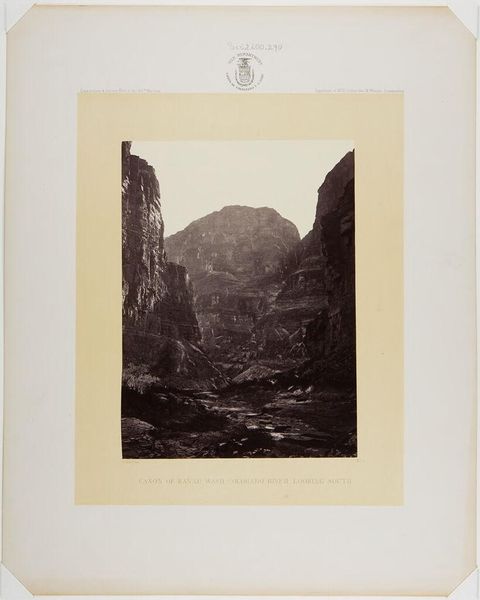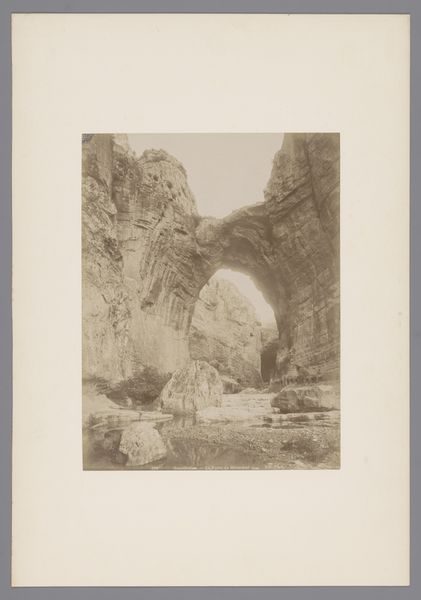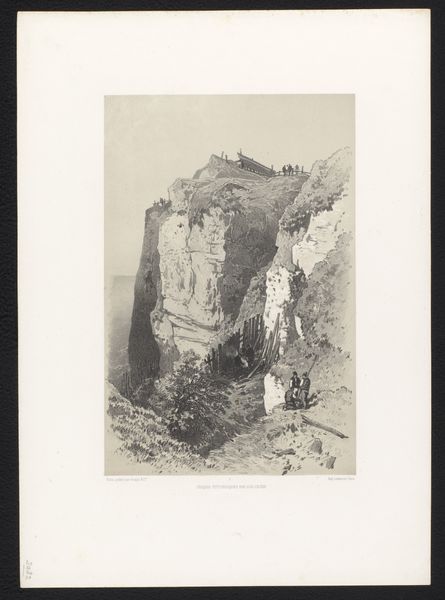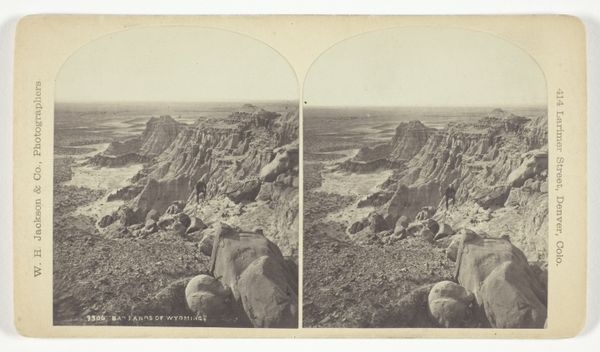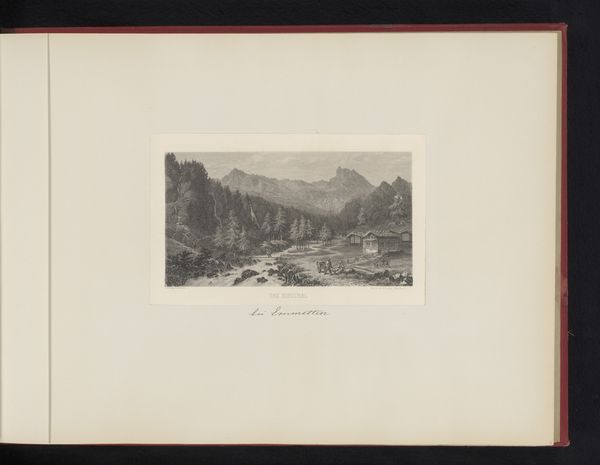
print, photography, gelatin-silver-print
# print
#
landscape
#
photography
#
gelatin-silver-print
#
hudson-river-school
Dimensions: Image: 8 1/16 × 10 13/16 in. (20.5 × 27.5 cm)
Copyright: Public Domain
Curator: So much light and shadow! The scale of the canyon seems unbelievable. It's like gazing into some kind of silent, rocky god. Editor: You're not wrong. The work here, "Head of Cañon de Chelle, Looking Down," is a gelatin silver print from 1873, captured by Timothy O’Sullivan. He was part of expeditions documenting the American West. Curator: Ah, I see. It really does convey that grand sense of discovery, doesn't it? Like standing at the edge of the known world. I feel like I could almost step inside it and wander around for hours. Do you get the sense of this majestic scene kind of just sprawling on endlessly behind the lens? Editor: It's seductive in its simplicity, for sure. But I find myself dwelling on the historical context of that "discovery," as you call it. These landscape photos, romantic as they may appear, actively fueled colonial expansion. O'Sullivan's work supported government narratives that justified dispossessing Indigenous peoples of their land. Curator: A sobering point, indeed. But maybe, just maybe, art can hold multiple truths at once? I mean, isn't it also a testament to the geological beauty and magnificence of nature itself? Editor: Certainly. I don’t think that the work isn’t important from an artistic lens. It's about layering critical perspectives—the technical skill is there, the sublime beauty… but whose gaze are we seeing this through, and what was the impact of that vision? How might a native artist, living within this region at that very same point in time, capture this exact same landscape scene? Curator: Hmm, it does complicate the picture a little. Makes me wonder if we’ll ever truly disentangle the complex legacy of works like this, caught as it is between exploitation and genuine wonder. I think there's something undeniably haunting in those striated canyon walls. It feels ancient beyond measure. Editor: Perhaps acknowledging those complicated threads is a way of moving forward. By grappling with the historical implications while appreciating the artistic craft, we can build a more nuanced understanding. That, for me, is how we fully encounter the art.
Comments
No comments
Be the first to comment and join the conversation on the ultimate creative platform.
